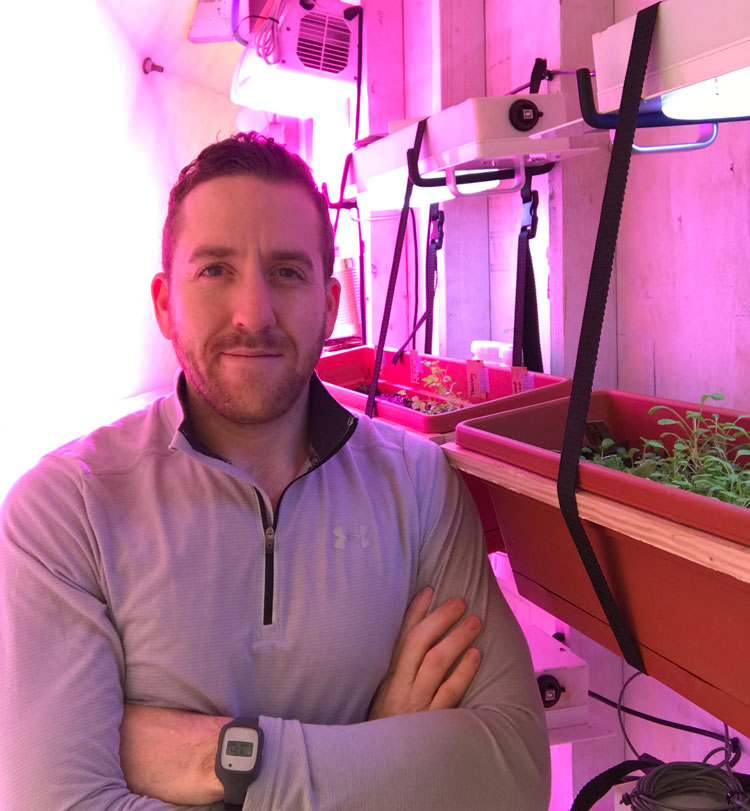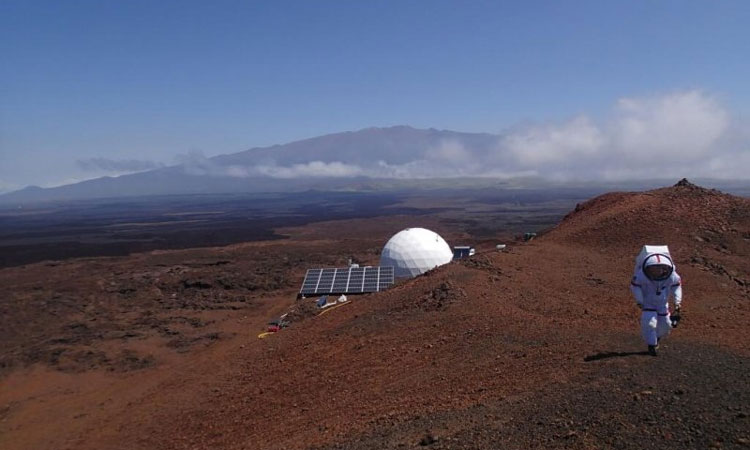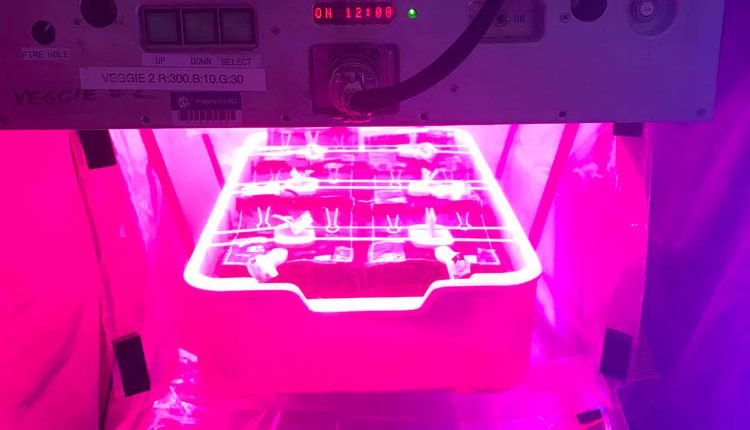NASA conducts Veggie research for space travel
Joshua Ehrlich, a former NASA intern who was critical to the development of NASA’s food production system VEG-01, is working with NASA and has dubbed himself the Mark Watney of the HI-SEAS, while scientists are conducting psychological studies in a simulated Martian environment here on Earth, one of its eight-month inhabitants is pulling double duty.
HI-SEAS, or Hawai’i Space Exploration Analog and Simulation, takes place about 8,000ft. above sea level on the slopes of the Mauna Loa volcano on the island of Hawai’i. The simulation is run by the University of Hawaii and allows the participants to live and work almost like astronauts, in conditions similar to what they would encounter on a planetary mission to Mars. Ehrlich decided to spend his time in isolation growing crops—all while helping NASA.
In addition to his clothes, reading materials and, of course, his space suit, Ehrlich brought two plant growth systems with him. One of them came from Dr. Gioia Massa, NASA’s Veggie project scientist. While Ehrlich hasn’t worked for NASA in a few years, when he offered to help further their Veggie research, Massa loaned him an identical Veggie system to what is currently aboard the International Space Station. The results from this study may lead to improvements in growth efficiency and plant harvest production and could be implemented in the Veggie system currently on station or considered for design of future plant payloads.

Credits: Joshua Erlich
“I am focusing on the optimization of plant growth parameters through the use of the Veggie ground unit model here in the habitat,” Ehrlich said via email—his only form of communication while on simulated Mars. “Veggie has a multitude of parameters in-play when it comes to growing greens and vegetables onboard the ISS. I am looking to create a set of optimal conditions – from water delivery methods and light emission levels to plant-to-LED displacement, for defining the ideal growth scenario for the plant from seed to harvest.”
“This long-duration test of continuous food production in a closed environment will yield important data that will be relevant as we look toward growing food for future exploration scenarios,” Massa said.
For the second plant growth system, Ehrlich reached back to his Florida roots and is partnering with Fairchild Tropical Botanic Garden and its Growing Beyond Earth (GBE) challenge that is usually just for Miami-Dade area middle and high school students. This particular challenge is made possible by a grant from NASA, and is managed by Kennedy’s Education Office. With thousands of students partnering with Massa to determine the most suitable edible plants for her team to grow in space, she recommended Ehrlich reach out to Fairchild to see how he could work with them too.

Credits: HI-SEAS
“After meeting with the Growing Beyond Earth team, I knew it was a perfect match and I am so happy to be working with Fairchild and the students,” Ehrlich said. “Calling south Florida home for more than 20 years now, it was nice to bridge that connection with students from there who are just as interested in space as I was at that age.”
Fairchild gave Ehrlich a low-tech mini growth chamber they give their students for the challenge, and it is seated right next to the high-tech Veggie system from NASA.
“Fairchild is excited to show the thousands of students who are actively contributing to NASA’s Veggie research through the Fairchild Challenge Growing Beyond Earth project how the same system they are using is being utilized to forward plant research for space travel,” said Amy Padolf, Fairchild’s director of education.
The knowledge Ehrlich is gaining and regularly sharing with NASA and Fairchild will be beneficial for providing food production to future space colonies and could have important implications for improving plant growth here on Earth. When he returns from “Mars,” Ehrlich will produce presentations and publications, co-authored by NASA, of his work. Later this year, the Advanced Plant Habitat will be up and running aboard the space station—providing even more knowledge about plant growth in space. Funding for Veggie and the Advanced Plant Habitat is provided by the division of Space Life and Physical Sciences Research Applications at NASA Headquarters.


Comments are closed, but trackbacks and pingbacks are open.